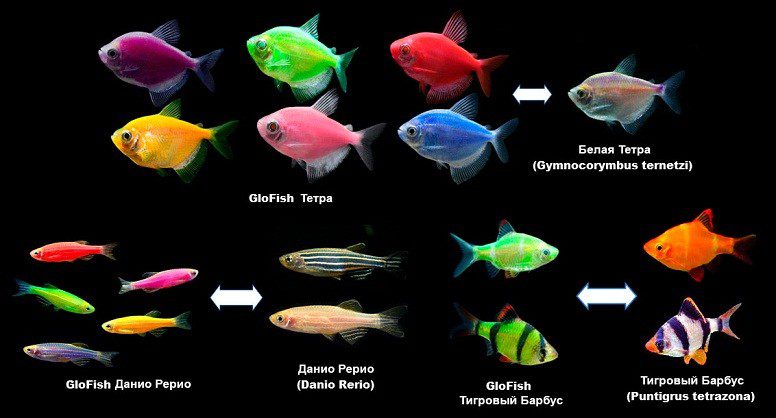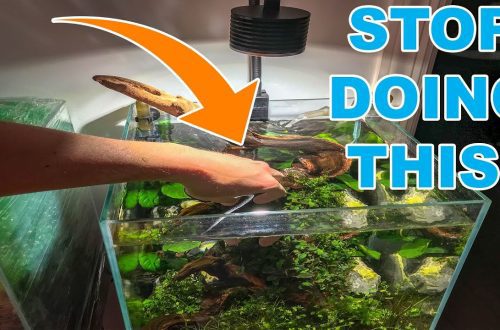
Luminous (fluorescent) aquarium fish – a bit of history
For the first time, commercial glowing fish in home aquariums appeared back in 2003 in the United States. This innovation created a lot of noise and debate about the ethics of using genetic engineering in the field of aquarism and in relation to pets in general still does not subside. However, government regulatory authorities in most countries (America, some European countries, Asia) allow the import and sale of luminous fish. In the CIS countries, they are also available for sale both in pet stores and via the Internet.

Fluorescent proteins have been used by scientists for decades as markers for the harmless observation and tracking of cellular development. Similar research methods have found wide application in the field of genetics, molecular biology and the development of vertebrates.
The first luminous fish Danio Rerio was bred in the 1990s at the National University of Singapore by Dr. Zhiyuan Gong. However, it emitted light only under specific hydrochemical conditions and was used as a biological tool to determine the level of water pollution. The idea to use them in aquaristics arose around the same time, but for this it was necessary to solve one problem – to make the fish glow all the time, regardless of external conditions.
Already on July 16, 1999, the same university filed application PCT/SG99/00079 to the American Patent Office, describing a method for obtaining fluorescent transgenic ornamental fish, in particular Danio rerio, giving a greenish or bluish light. Patent number US 7135613 B1 has been received.
The stage of commercial success is associated with the company Yorktown Technologies, LP, represented by its founder Dr. Richard Crockett (Dr. Richard Crockett), which acquired from the University of Singapore and other organizations exclusive intellectual property rights and related patents related to the production and sale of luminous fish. The GloFish brand was created. It is worth noting that Richard Crockett managed to secure his business by obtaining licenses and trademarks that prevent other companies from engaging in the same type of activity.
The market entry took place at the end of November 2003 in the United States. It was preceded by an active advertising campaign in major publications and TV channels. The success exceeded all expectations. He was also encouraged by the active discussion that unfolded in the media about the legitimacy of using transgenic fish in the aquarium trade.
Initially, the choice of colors for luminous fish was small, as was the sheer number of species – it was Danio with a green glow. The company continued research and active patent activity (patents No. US 7700825 B2, US 8232450 B1, US 8581023 B2 and others). As a result, new colors appeared: blue, purple, pink, yellow. Fluorescent genes began to be implanted in Sumatran Barbs and Ternets.
Transgenic luminous fish are obtained in a safe way that does not threaten their life and health. Not to be confused with artificially colored fish, which are given color and patterns by dye injections. They are widespread in Asia, but banned in Europe and America just because of the way they are dyed.





